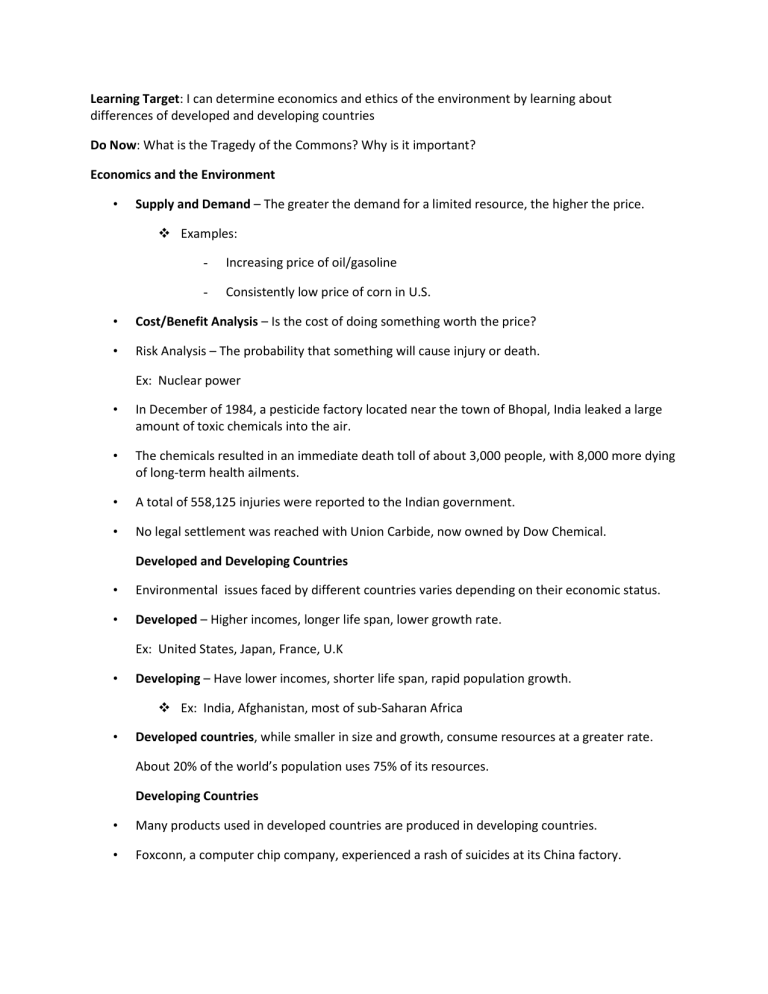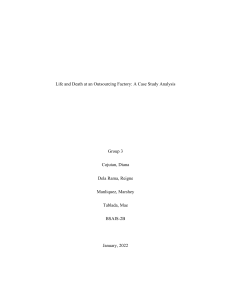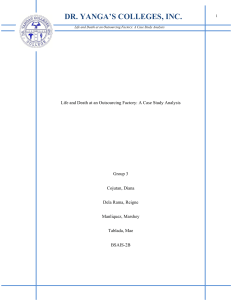
Learning Target: I can determine economics and ethics of the environment by learning about differences of developed and developing countries Do Now: What is the Tragedy of the Commons? Why is it important? Economics and the Environment • Supply and Demand – The greater the demand for a limited resource, the higher the price. Examples: - Increasing price of oil/gasoline - Consistently low price of corn in U.S. • Cost/Benefit Analysis – Is the cost of doing something worth the price? • Risk Analysis – The probability that something will cause injury or death. Ex: Nuclear power • In December of 1984, a pesticide factory located near the town of Bhopal, India leaked a large amount of toxic chemicals into the air. • The chemicals resulted in an immediate death toll of about 3,000 people, with 8,000 more dying of long-term health ailments. • A total of 558,125 injuries were reported to the Indian government. • No legal settlement was reached with Union Carbide, now owned by Dow Chemical. Developed and Developing Countries • Environmental issues faced by different countries varies depending on their economic status. • Developed – Higher incomes, longer life span, lower growth rate. Ex: United States, Japan, France, U.K • Developing – Have lower incomes, shorter life span, rapid population growth. Ex: India, Afghanistan, most of sub-Saharan Africa • Developed countries, while smaller in size and growth, consume resources at a greater rate. About 20% of the world’s population uses 75% of its resources. Developing Countries • Many products used in developed countries are produced in developing countries. • Foxconn, a computer chip company, experienced a rash of suicides at its China factory.



